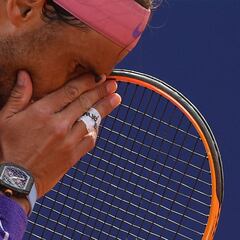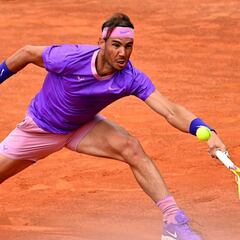Tennis: "If we operate on Nadal, he may never be able to run again" warns specialist
Gilbert Versier, former chief of the orthopaedic surgery department at Vincennes military hospital, explained the symptoms of Muller-Weiss syndrome.

Rafa Nadal's absence from the US Open has drawn attention once again to the Spanish tennis player's complex physical problems. An orthopaedic specialist has spoken to L'Équipe about Nadal's disorder and underlined what others have said on many occasions that surgery simply isn't an option. The reason is that an intervention could mean that Rafa will never be able to run again and that would signal the end of his professional career...
Gilbert Versier, the former head of the orthopaedic department at Vincennes military hospital, explained the origins of Muller-Weiss syndrome, which Rafael Nadal is suffering from.
Due to an ongoing foot injury @RafaelNadal has called an end to his 2021 season 🤕
— Wimbledon (@Wimbledon) August 20, 2021
We wish him all the best in his recovery and are eagerly awaiting his return 🙏#Wimbledon pic.twitter.com/uy499ogT83
Nadal's problems with his feet
"It usually affect people who have flat feet. It's congenital. In some people, the arch of the foot is more pronounced - in other words, there is a greater distance between the sole of the foot and the floor. Others have a fallen arch when the insole loses its curvature and those people tend to be more susceptible to this kind of pathology. It causes the navicular bone to become compressed which eventually develops necrosis. Basically the bone dies, it loses its vascularization," Doctor Versier explained.
Related stories
"A stress fracture could also be the cause - when bones don't heal properly. When the fracture occurs at the point where vascularization no longer reaches it, the area where the blood vessels are which could result in a necrosis. But it is a very rare pathology, and its origins are not very clear. It's not a pathology which necessarily evolves very quickly. Deterioration happens over time and is quite painful, but usually osteoartritis takes a long time to develop. We have seen these kinds of conditions in women over the age of 50. It is not something we tend to see in young people," he added.
When asked his opinion on Nadal's case, Versier says he would advise against surgery. "Such a procedure jams up the foot leaving the patient able to walk but not run. That's why we delay such operations and perform them only on patients who are in a lot of pain and unable to walk properly. Of course that is not the case with Nadal. Any surgical procedure, resection of a part of bone or grafts by taking part of the pelvic bone is a practice which is no longer allowed at the top level of sport," he concluded.

